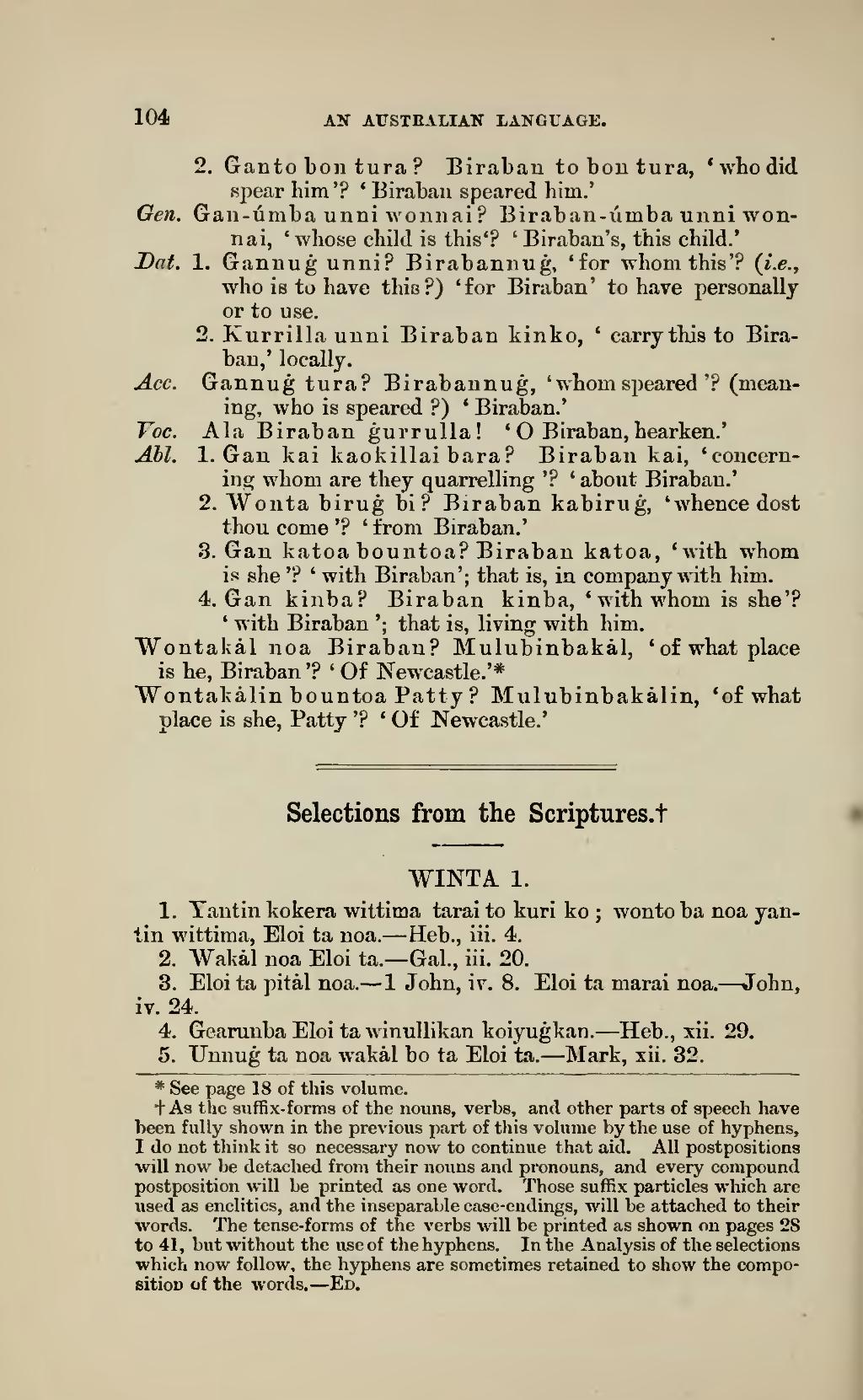104 AN AUSTRALIAN LANGUAGE.
2. Ganto bon tura ? Biraban toboutui*a, * who did sjiear him'? ' Birabau speared him.' Gen. Gau-iimba unni wounai ? Biraban-iimba unni won-
nai, ' whose child is this'? ' Biraban's, this child.' Dat. 1. Gannug unni? Birabannug, 'for whom this'? {i.e., who is to have this?) 'for Biraban' to have personally or to use. 2. Kurrilla unni Biraban kinko, ' carrythis to Bira- ban,' locally. Ace. Gannug tura? Birabannug, 'whom speared '? (mean- ing, who is speared ?) ' Biraban.' Voc. Ala Biraban gurrulla! ' O Biraban, hearken.' Ahl. 1. Gan kai kaokillai bara? Biraban kai, 'concern- ing whom are they quarrelling '? ' about Biraban.'
2. Wonta birug bi ? Biraban kabiriig, 'whence dost thou come '? ' from Biraban.'
3. Gan katoa bountoa? Biraban katoa, 'with whom is she '? ' with Biraban'; that is, in company with him.
4. Gan kinba? Biraban kinba, ' with whom is she'? ' with Biraban '; that is, living with him.
"Wontakal noa Biraban? Mulubinbakal, ' of what place
is he, Biraban '? ' Of Newcastle.'* Wontakalin bountoa Patty ? Mulubinbakalin, 'of what
place is she, Patty '? ' Of Newcastle.'
��Selections from the Scriptures.t
��WINTA 1.
1. Tautin kokera wittima tarai to kuri ko ; wonto ba noa yan- tin wittima, Eloi ta noa. — Heb., iii. 4.
2. Wakal noa Eloi ta.— Gal., iii. 20.
3. Eloita pital noa. — 1 John, iv. 8. Eloi ta marai noa. — John, iv. 24.
4. Gearunba Eloi ta winullikan koiyugkan. — Heb., xii. 29.
5. Unnug ta noa wakal bo ta Eloi ta. — Mark, xii. 32.
- See page 18 of this volume.
+ As the sufBx-forms of the nouns, vei'bs, and other parts of speech have been fully shown in the previous part of this volume by the use of hyphens, I do not think it so necessary now to continue that aid. All postpositions will now be detached from their nouns and pronouns, and every compound postposition will be printed as one word. Those sufBx particles which are used as enclitics, and the inseparable case-endings, will be attached to their words. The tense-forms of the verbs will be printed as shown on pages 2S to 41, but without the use of the hyphens. In the Analysis of the selections which now follow, the hyphens are sometimes retained to show the compo- sition of the words. — Ed,
�� �

